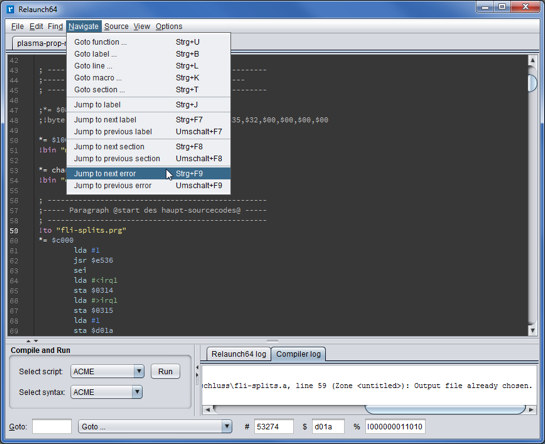
Relaunch64 is an IDE (text-editor) for C64 assembler-coding on Windows, Linux and Mac OS X. Relaunch64 has a clean and intuitive user interface, yet it offers many features that make coding faster and easier.
Java 7 or higher is required to run Relaunch64. The program is licensed under the GNU GPL 3 (or higher) and free for private and professional use.
This editor works together with common cross assemblers like Kick Assembler, ACME, or 64tass. Other assemblers might work as well, but syntax highlighting may not be 100% correct.
Download: Relaunch64 V3.0 (1050)
source: popelganda.de
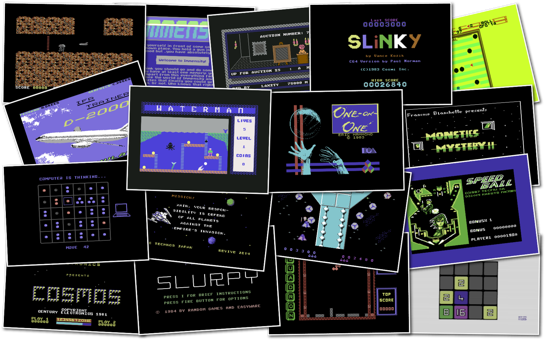
Some new games or tools (Cracked / Trained or Unrealeased) for Commodore 64 have been released from your favorites groups.
Titles:
- Monstics Mystery II Preview &D +Pic
- Cosmos V1.2 +7MD
- Quadron +1ED
- Speed Ball
- D-2000 IFR-Trainer – Germany 2 +EFD [pal/ntsc]
- Stronghold +3D
- Roll – final version
- Vermeer +1ED [english]
- 2048
- Immensity Preview 2
- Waterman +5E
- Voidrunner HS
- Nuclear Reaction 2100
- Slinky 101% +7MHD
- Slurpy +++-hi
- One On One +2GD
- Xain’d Sleena Preview +
- The Last Hope
Download: All Games in One Archive (3455)
source: csdb.dk

Gallery:
Commodore 64 ASSY 250407 Empty PCB + some Working components.


The horizontal measuring was made calculating the ledge at the base of the monitor.
Unfortunately, this monitor suffers from a serious problem of image quality.
The monitor become very hot and the adjustment resistance (trimmer) of the Focus controls that is inside the flyback loses its original value.
After nearly an hour of operation, the image becomes blurred and we must adjust the trimmer of the focus located inside the monitor, that’s why i have made this modification to the external case of the monitor.
The flyback is NOT longer exists as a spare parts.


Datanetics Apple Keyboard Fix.
After a few cold solder joints redone the keyboard works almost perfectly.
Todo:
- The “V” key is totally dead.
- The keys are a bit tired, don’t return always in the original position.
Overall is fine.
Datanetics Apple Keyboard *update*
I found a temporary solution for the tired keys they don’t return always in the original position. I have put a small spring (see the picture). Now the keys works correctly.
About the “V” key completely dead, i have desoldered it and i have tried to spray a air into the slots without having any results, so i have tried a extreme thing, i have used the key switch like a whistle. ;-D I have blown inside several times, the result is the key switch now are working again. I have made the same thing for the “right arrow”.




Apple II Europlus / Keyboard and Floppy Disk Drive Repair
Defects:
- The peripheral slots are totally dead.
- Don’t runs programs that take up more than 16k
- The keyboard doesn’t respond properly.
- The Floppy Disk Drive don’t read anything.
Replaced parts:
- Replaced [H12] Decoder/Demultiplexer 74LS138 in the position [H12]
- Replaced 3 x 4116 RAM in the row [D]
Keyboard:
- Cleaned the blades and the contacts on the pcb. Work not recommended to those who have little skill.
Apple Floppy Disk Drive:
- The Floppy Disk Drive (Drive 2) had to be cleaned and oiled.


Macintosh Plus repair.
Defect:
- Mac sad face with error code not readable.
Replaced parts:
- 2 x ROM (342-0341-B / 342-0342-A) replaced with two EPROM 27C512 (pinout compatible)
Note:
All roms that i have found on the net or sent by friends are not working.
I had to do a dump of the Rom of my Macintosh Plus and at this point everything has worked immediately.
Download: Macintosh Plus ROM (27C512 Splitted) (1512)
Apple IIe STK Asic Clone (Maybe Orange) repair.
Defect:
- Short-circuit on all voltages.
- Black/Garbage screen.
Replaced parts:
- 10 x Tantalum Capacitor 4.7uf (replaced with Electrolytic Capacitors)
- 3 x RAM OKI M3764A-15 in Short-circuit.
- 1 x ROM 1 (EPROM 27128)
Note:
I have to thank immensely my friend Alessandro Polito for providing me the dump of the ROM 1 of the Orange (Apple IIe Asic Clone)
Download:

Gallery:
Commodore 64 ASSY 250425 Empty PCB + some Working components.
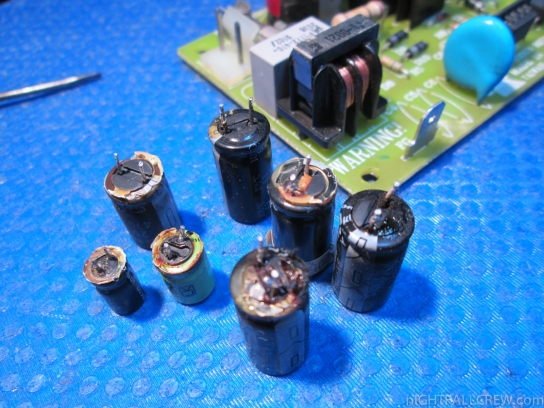
Gallery:
Example of replacing exhausted Electrolytic Capacitors.
My advice is always to replace all capacitors although at first view does not seem exhausted with acid leakage.
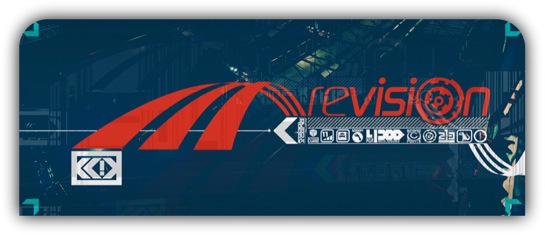
This is the official demo party results (C64 Only) from Revision 2014. See also the official homepage for more informations.
C64 4K Intro:
- 3 – Back in the Saddle by Razor 1911.
C64 Game:
- 2 – Immensity – Revision 2014 Edition by Dév.
WiLD Demo:
- 1 – 10 Orbyte by Tristar & Red Sector Incorporated.
Mixed Graphics:
- 4 – Lost in the Forest of Owls by Chorus, Resource, Singular.
- 5 – Party Train Incoming – Mind the GAP by Tristar & Red Sector Incorporated.
- 6 – Social Net by Arsenic, Oxyron.
- 8 – Devil or Angel? by Resource.
Mixed Music:
- 2 – Dekadance by Darklite.
- 4 – Spiral Silicon Towers by Panda Design.
- 5 – Specular Highlight by Lft.
- 9 – Fuzzy Brawl by Edge of Panic.
Mixed Demo:
- 3 – Redefinition by Fairlight, Offence.
- 6 – Panopticon by Brainstorm, Traction.
Download: Revision 2014 Party stuff (1646)
source: noname.c64.org 2014.revision-party.net
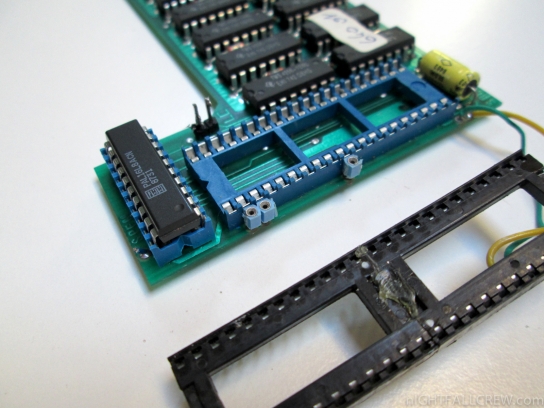
I thank my dear friend that gave me the Spem EXP-MEM 512k.
Autopsy:
Various companies offered to upgrade your QL with an internal memory upgrade. This was normally 512K, but some companies also offered a 256K version.
The method of upgrade was in two ways:
- Removal of the existing QL memory chips and replacement to give a total of 512K
- An internal board, which connects to the 8301 ULA socket, and has a wire to the 68008 processor.
The downside of this method of upgrading the QL’s memory was:
- The memory access was slower than external memory
- You could not use some of the later QL expansions, such as the Trump Card which themselves had memory built into the interface.
Internal interfaces were advertised by a range of companies, including CST, MicroPeripherals and Silicon Express.
source: Sinclair QL Computer Wiki
 Forth, the Language.
Forth, the Language.
Forth is a different language. It’s aged and a little weird.
What’s cool about it? It’s a very low-level and minimal language without any automatic memory management. At the same time, it easily scales to become a very high-level and domain-specific language, much like Lisp. Compared to C64 Basic, Forth is more attractive in almost every way.
It is a lot more fast, memory effective and powerful. Compared to C, specifically cc65, the story is a little different. It’s hard to make a fair comparison. Theoretically Forth code can be very memory efficient, and it’s possible to make Forth code that is leaner than C code. But it is also true that cc65 code is generally much faster than Forth code.
Download: durexForth v1.3 + Manual (1059)
source: noname.c64.org
 Javatari is a multiplayer Atari 2600 emulator written in pure Java with no external libs.
Javatari is a multiplayer Atari 2600 emulator written in pure Java with no external libs.
Features:
- Client-Server multiplayer mode. Runs great in low-latency networks such as LANs.
- Drag&Drop and Copy&Paste of ROM files or URLs. Very easy to try ROMs from websites!
- Scanlines and TV screen emulation modes.
- Real Atari console user interface.
Changelog:
- New concept: Savestate Cartridges!
- Store emulator state as Savestate Cartridge files to disk any time (press F8)
- Savestate Cartridges can be distributed and loaded as normal ROMs.
- Savestate Cartridges can also be embedded as auto-load ROMs.
- Support for Starpath/Supercharger Tape ROM format.
- Bugfixes and improvements.
Download: Javatari JAR v4.1 (Needs Java 6 or greater) (1123)
source: javatari.org


























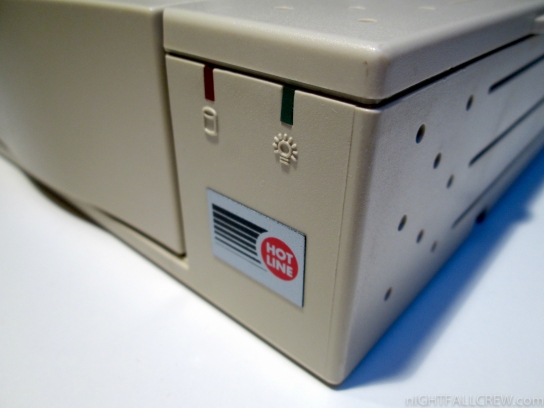



























 Forth, the Language.
Forth, the Language.


Recent Comments